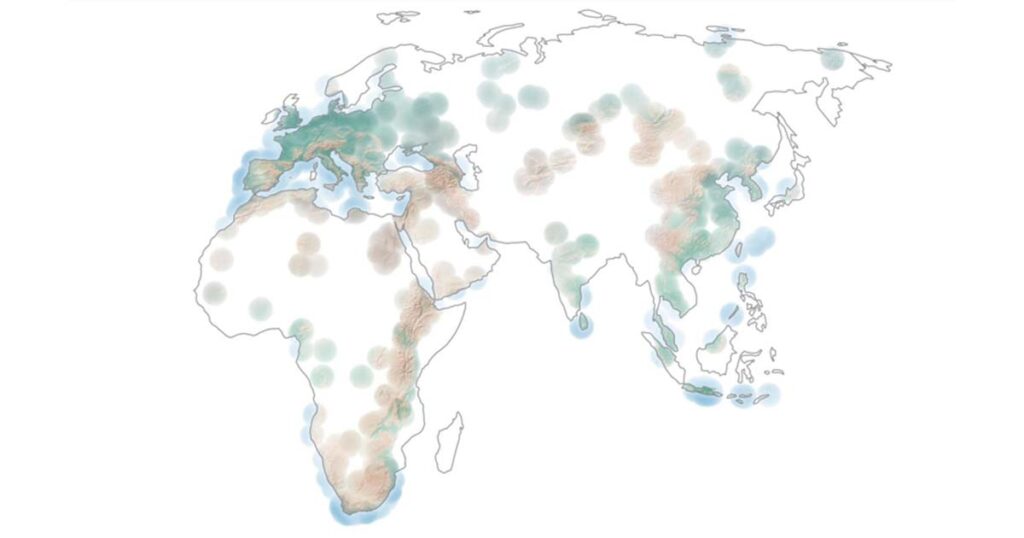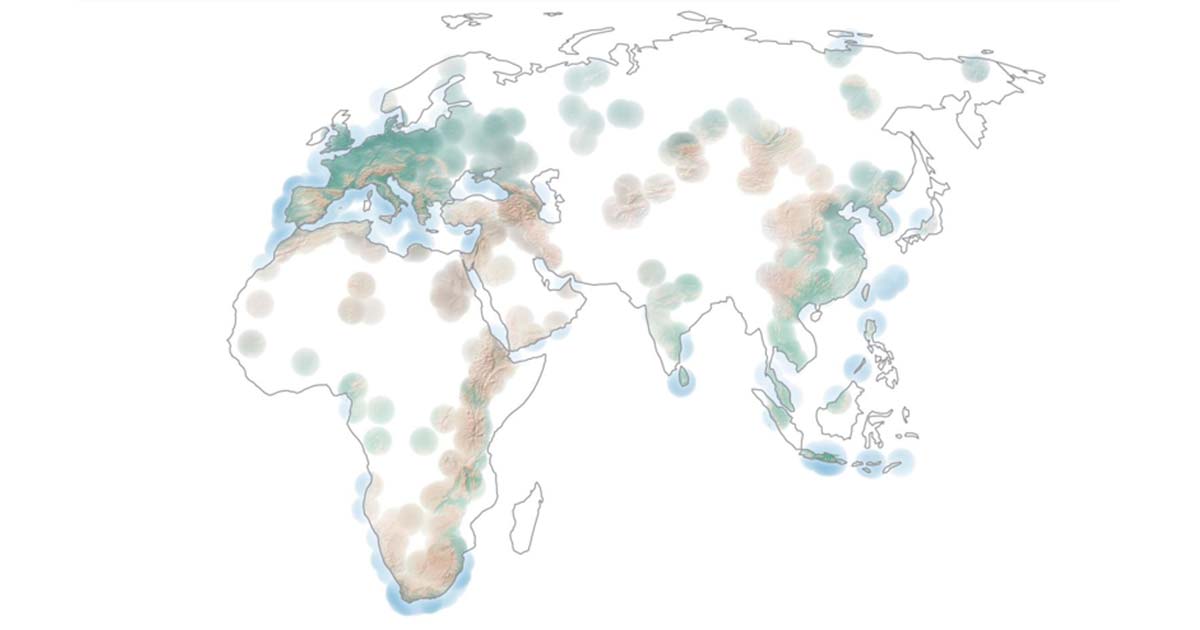

In another step towards unraveling the intricate tapestry of human history, a huge database of prehistoric sites spanning a history from 3 million to 20,000 years ago has been unveiled. This achievement marks the culmination of 150 years of research and is set to revolutionize our understanding of human evolution. The database, christened “ROCEEH Out of Africa Database” (or ROAD), has been compiled by the researchers from the ROCEEH center and offers a panoramic view of ancient cultures, artifacts, and their geographical distribution.
150 Years of Data, Six Scientists, and a Lot of Help
The magnitude of this achievement is accentuated by the painstaking effort invested by an international team of six scientists and numerous research assistants. Their meticulous compilation involved dissecting over 5,000 publications, encompassing languages like Chinese, Russian, English, German, French, Italian, Spanish, and Portuguese. The resulting database is a testament to the collaborative prowess of the global scientific community.
Housed at the University of Tübingen in collaboration with the Senckenberg Society for Nature Research, the project was sponsored by the Heidelberg Academy of Sciences and Humanities and received partial funding from the Union of German Academies. Dr. Andrew Kandel of the University of Tübingen, a key figure in this endeavor, emphasized that ROAD amalgamates data from diverse disciplines such as archaeology, anthropology, paleontology, and botany into a cohesive framework. This enables researchers and enthusiasts alike to dissect the multifaceted aspects of human evolution on a global scale.

This map shows the distribution of African, Asian and European sites in ROAD. Examples of the different types of finds ROAD contains are shown clockwise from lower left: stone handaxe, grinding stone covered in red ochre, shell ornament, stone projectile point, bovid skull, pollen grain, human cranium, double bone point, and piece of orange ochre. (Objects not shown to scale). (Christian Sommer (ROCEEH)/Tuebingen University)
One of the main features of ROAD is its map interface, which vividly illustrates the distribution of prehistoric sites across the globe. This interface not only serves as a visual tool but also allows users to hone their maps through specific queries. With the ability to pinpoint cultures, time periods, and geographical regions of interest, users can delve into the past with newfound ease. Furthermore, researchers can download a concise “ROAD Summary Data Sheet,” streamlining the extraction of vital site information.
Dr. Kandel elaborated on the database’s potential, highlighting its capacity to accommodate advanced queries. By using ROAD, scientists can discern the prevalence of distinct categories of stone tools across different parts of Africa. It can also unveil the spatial distribution of specific animals like horses, rhinoceroses, or reindeer during climatic shifts, such as glacial advances and retreats. This trove of data provides researchers with a rich canvas for visualization and analysis, offering the potential of unearthing concealed patterns and narratives.
In the spirit of fostering open science, the team behind ROCEEH has generously made the ROAD database freely accessible to the public, students, and scholars globally. This act of knowledge democratization underscores their dedication to unlocking humanity’s shared past, somewhat like the 25000+ free articles provided on Ancient Origins. Notably, the scope of the study encompasses well-studied regions like Southern and Eastern Africa, Europe, and Central and East Asia. However, Oceania was not within its scope, leaving room for future exploration and discovery. The human historic remains from the time range (up to 20,000 years ago) are yet to be found in the Americas, if indeed they exist.
Throwing Light on Prehistoric Evidence
The unveiling of ROAD has revealed the reality that much of our understanding of human history stems from limited geographical focal points. The map of prehistoric sites, with its conspicuous blank spaces, speaks volumes about the untapped potential awaiting exploration. This achievement does more than provide a digital repository; it beckons researchers to broaden their horizons, embarking on quests for knowledge that transcend conventional boundaries.
As we delve deeper into the past, this monumental compilation of data fosters a renewed sense of awe and curiosity. It underscores the power of collaborative research and technological innovation in shaping our perception of the human journey. The landscape of human history, once shrouded in mystery, is now illuminated by the luminous glow of digital information, inviting us to traverse the corridors of time with renewed vigor and insight.